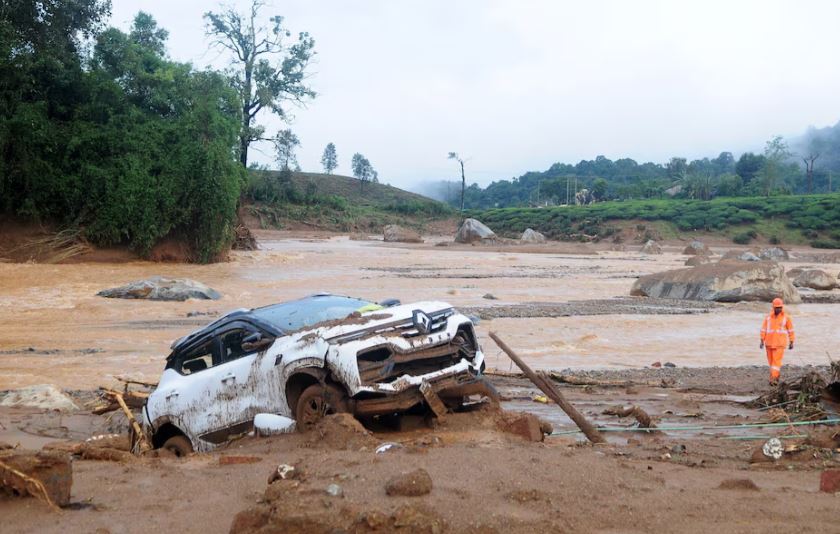The devastating landslides in Wayanad, Kerala, have brought the increasing frequency and intensity of such events into sharp focus. This article delves into the factors contributing to landslides, their escalating occurrence due to climate change, and the specific triggers behind the Wayanad tragedy.
Introduction
The year 2024 has witnessed a series of deadly landslides across the globe, underscoring the growing threat of these natural disasters. In Wayanad, Kerala, the devastating consequences of multiple landslides have left a trail of destruction and loss. This article seeks to shed light on the underlying causes of landslides, their connection to climate change, and the specific factors that contributed to the Wayanad tragedy.
Understanding Landslides: A Complex Phenomenon
Landslides, often underestimated compared to other natural disasters, occur due to a combination of factors. These include:
- Conditioning Factors: These relate to the inherent characteristics of the terrain, such as steep slopes, weak soil, and geological formations, that make certain areas more susceptible to landslides.
- Triggering Factors: These events, such as intense rainfall, earthquakes, and human activities like deforestation and construction, can destabilize the slope and trigger a landslide.
India’s Vulnerability to Landslides: A Growing Concern
India, with its diverse topography and varying climatic conditions, is highly prone to landslides. A recent study by IIT-Madras revealed that 13.17% of India’s landmass is susceptible to landslides, with Kerala being one of the most vulnerable states. The state’s unique geological features, combined with heavy rainfall and human activities, have contributed to its susceptibility to such disasters.
Wayanad Landslide: A Case Study
The Wayanad landslides in July 2024 were triggered by a combination of factors. Weeks of continuous rainfall, exceeding the normal levels by 50-70%, saturated the topsoil. This, coupled with a day of extremely heavy rainfall akin to a mini cloudburst, destabilized the slopes and triggered the devastating landslides.
A significant contributing factor to the Wayanad tragedy was the prevalence of plantation farming in the region. Large-scale deforestation to create plantations for crops like tea and coffee has replaced native trees with shallow-rooted plants, weakening the soil’s ability to hold onto the bedrock. This, combined with the heavy rainfall, created the perfect storm for disaster.
Climate Change and Landslides: A Growing Nexus
The increasing frequency and intensity of landslides globally are closely linked to climate change. As global temperatures rise, extreme weather events like heavy rainfall and droughts become more common. These events can trigger landslides in vulnerable areas, leading to widespread destruction and loss of life.
Current Developments and Future Outlook: Mitigating the Risks
In light of the escalating threat of landslides, it is imperative for governments and communities to take proactive measures to mitigate the risks. This includes:
- Early Warning Systems: Developing and implementing early warning systems that can alert communities to impending landslides.
- Land-Use Planning: Regulating land use in landslide-prone areas to minimize human activities that contribute to instability.
- Afforestation and Soil Conservation: Planting trees and implementing soil conservation measures to stabilize slopes and reduce erosion.
- Climate Change Adaptation: Investing in climate change adaptation strategies to address the root causes of the problem.
FAQs
- What causes landslides? Landslides are caused by a combination of factors, including inherent geological features, intense rainfall, and human activities like deforestation and construction.
- How is climate change contributing to landslides? Climate change is increasing the frequency and intensity of extreme weather events like heavy rainfall, which can trigger landslides in vulnerable areas.
- What are the specific factors that contributed to the Wayanad landslides? The Wayanad landslides were triggered by a combination of heavy rainfall, plantation farming, and the region’s geological characteristics.
- What can be done to mitigate the risks of landslides? Implementing early warning systems, regulating land use, afforestation, and soil conservation measures, and investing in climate change adaptation can help reduce the risks.
Conclusion
The Wayanad landslide tragedy is a stark reminder of the growing threat of landslides in a changing climate. By understanding the underlying causes and implementing appropriate mitigation measures, we can work towards a safer and more resilient future.

Sunil Garnayak is an expert in Indian news with extensive knowledge of the nation’s political, social, and economic landscape and international relations. With years of experience in journalism, Sunil delivers in-depth analysis and accurate reporting that keeps readers informed about the latest developments in India. His commitment to factual accuracy and nuanced storytelling ensures that his articles provide valuable insights into the country’s most pressing issues.



